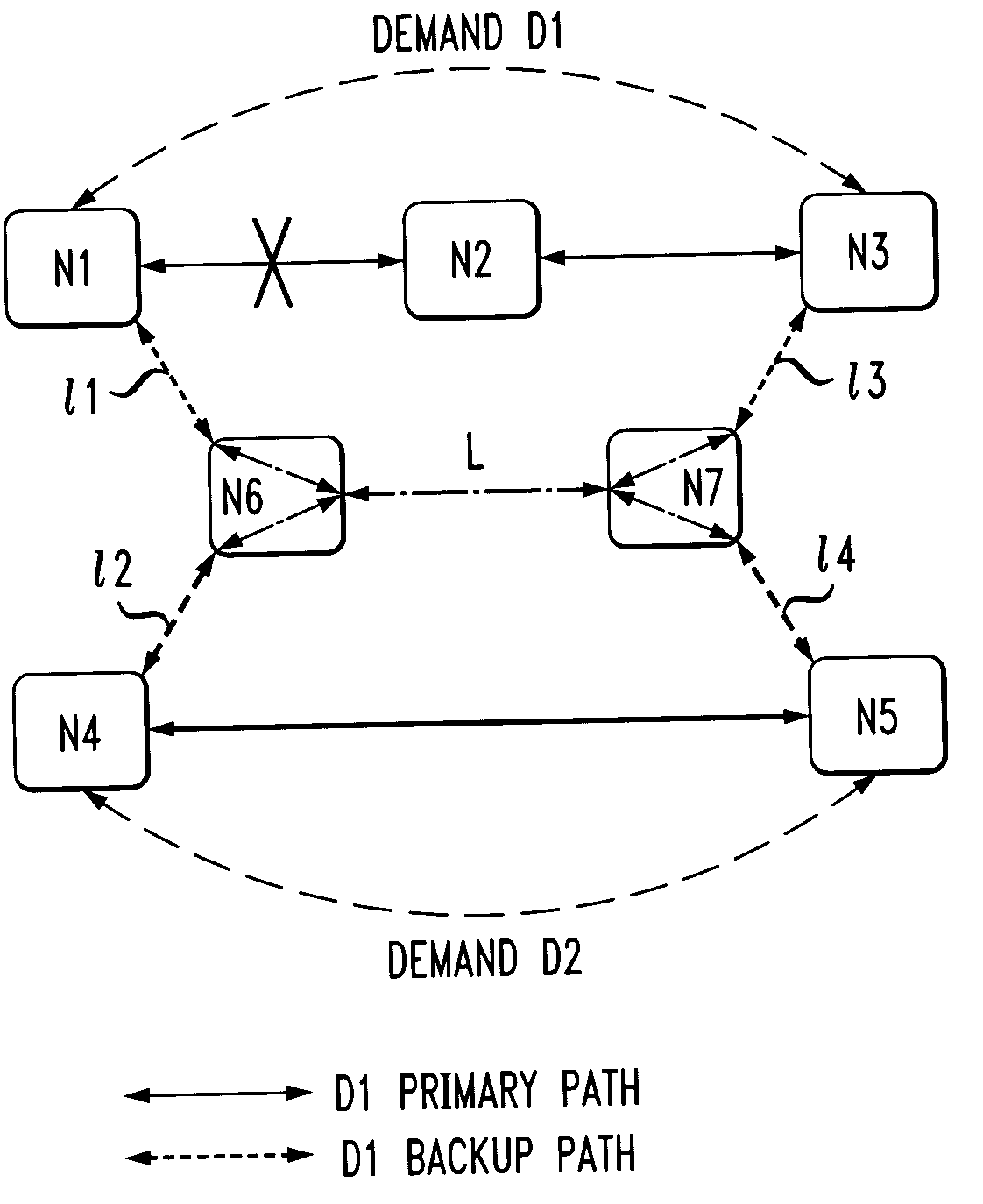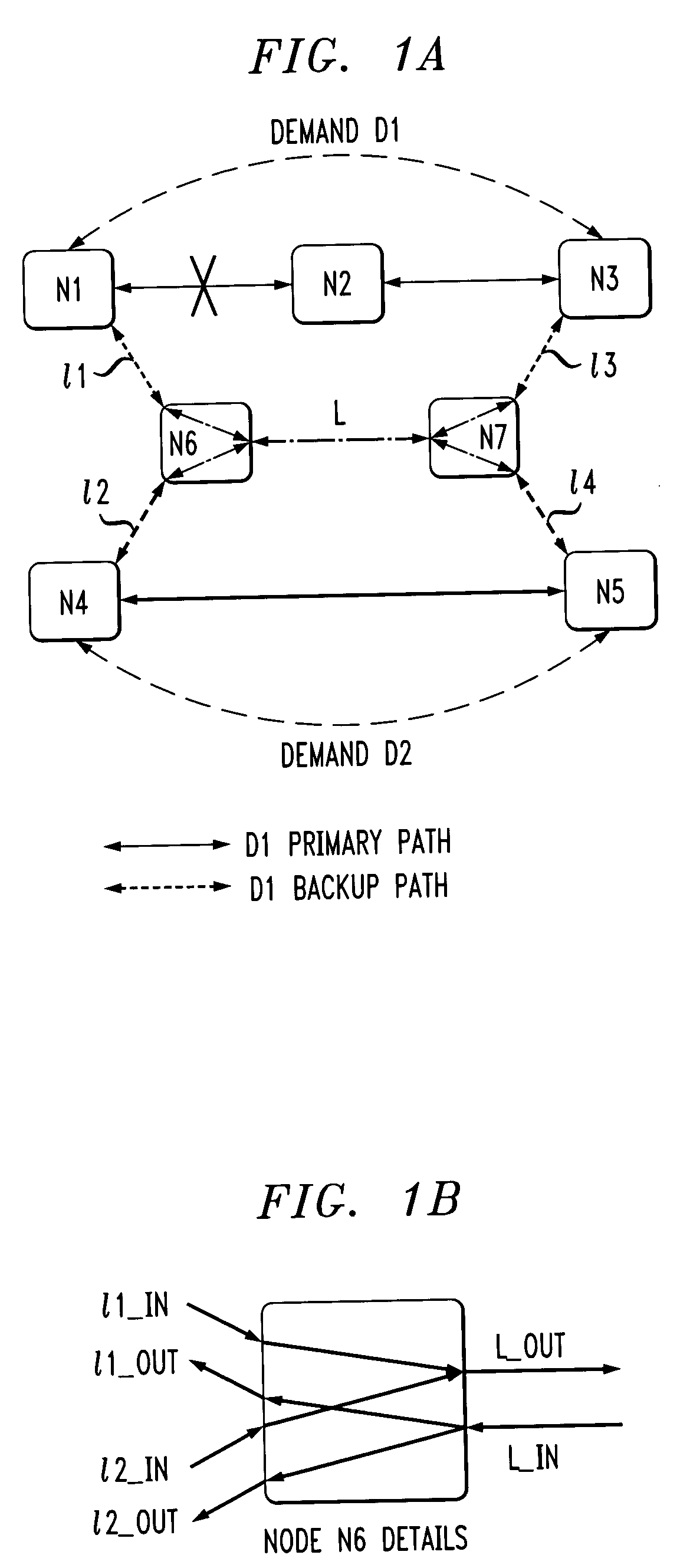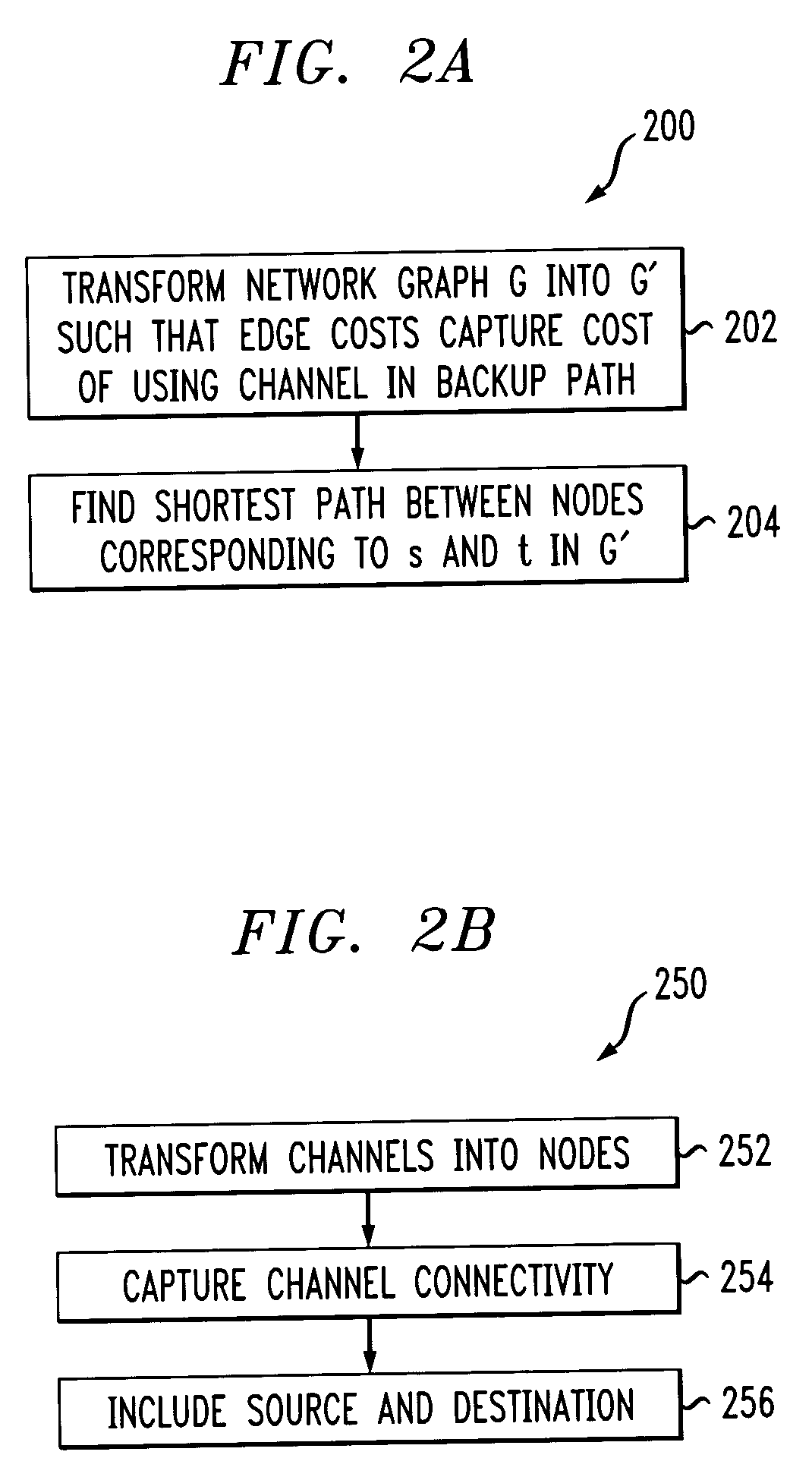Routing and design in K-shared network
a technology of routing and design, applied in the field of network routing and design techniques, can solve problems such as cost associated with edges
- Summary
- Abstract
- Description
- Claims
- Application Information
AI Technical Summary
Benefits of technology
Problems solved by technology
Method used
Image
Examples
Embodiment Construction
The following description will illustrate the invention in the context of an exemplary optical network. It should be understood, however, that the invention is not necessarily limited to use with any particular type of network. The invention is instead more generally applicable to any environment in which it is desirable to perform efficient demand routing and network design. Thus, by way of example only, the techniques of the invention may also be applied to circuit-switched networks such as SONET and multi-protocol label switching (MPLS) networks. Also, it is to be further appreciated that the present invention may be used to compute paths for optical burst switching.
As illustratively used herein, a “channel” may be a wavelength in an optical network, a “link” may couple two nodes and may include one or more channels, and a “path” may include one or more links.
As will be evident from the illustrative embodiments described herein below, the present invention provides several a...
PUM
 Login to View More
Login to View More Abstract
Description
Claims
Application Information
 Login to View More
Login to View More - R&D
- Intellectual Property
- Life Sciences
- Materials
- Tech Scout
- Unparalleled Data Quality
- Higher Quality Content
- 60% Fewer Hallucinations
Browse by: Latest US Patents, China's latest patents, Technical Efficacy Thesaurus, Application Domain, Technology Topic, Popular Technical Reports.
© 2025 PatSnap. All rights reserved.Legal|Privacy policy|Modern Slavery Act Transparency Statement|Sitemap|About US| Contact US: help@patsnap.com



